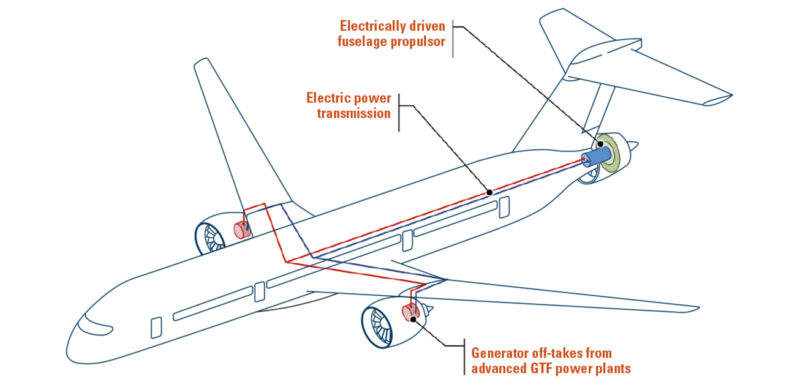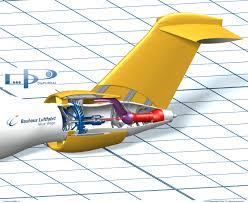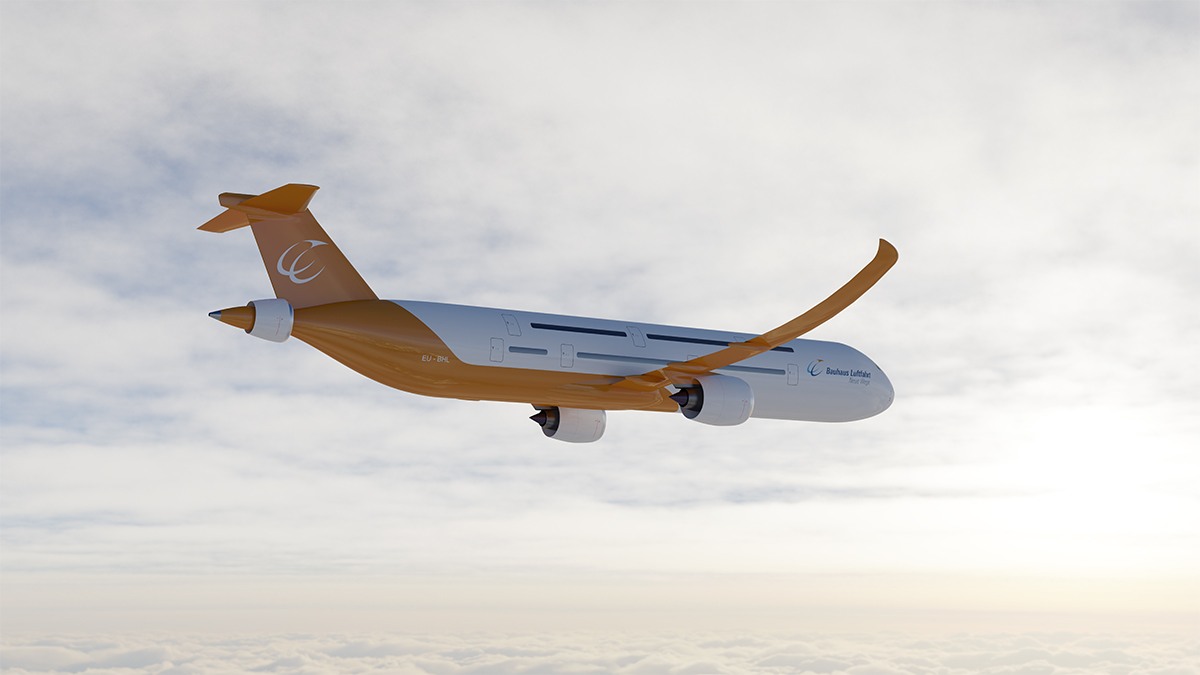- About 5% more fuel efficient
- 4.7% less CO2 emissions than a conventional aircraft
- more powerful and faster
- supported by several European universities
- industrialists such as Airbus, MTU, Rolls-Royce and Siemens participate
- research funded to the tune of 3.7 million euros by the EU
- coordinated by the Munich research institute Bauhaus Luftfahrt
A third engine at the rear is intended to make aircraft more efficient.
Many new drive concepts are aimed at smaller aircraft. Now there is an idea that makes fliers with more than 300 seats more efficient – and that is copied from ships.
It’s a new idea for the drive. Over the past three years, researchers from six European countries have reviewed a concept that aims to make aircraft more efficient and less harmful to the climate. The aviators not only have the usual two engines under the wings, but a third one at the end of the fuselage.

This third engine is operated electrically. It sucks in the airflow around the hull and turns it into extra thrust. This fuselage drive is supplied with electrical energy via generators on the engines under the wings.
The research, which was funded with 3.7 million euros by the EU, was coordinated by the Munich research institute Bauhaus Luftfahrt. Universities as well as industrial partners Airbus, MTU, Rolls-Royce and Siemens were involved. Bauhaus Luftfahrt explains that the concept transfers the physical principle of ship propulsion to airplanes.

“Ship propellers are usually located at the rear of the ship and are operated in the boundary layer flow near the ship’s surface,” the researchers write. Now it has been proven that this is also feasible with airplanes. The concept they call Propulsive Fuselage Concept PFC has the potential to “play a key role in the development of more efficient and environmentally friendly aircraft of the future”.
5 percent fewer emissions
The “PFC aircraft for 340 passengers generates 4.7 percent fewer CO2 emissions than an equally advanced conventional aircraft,” says Bauhaus Luftfahrt. It is also compatible with other advanced technologies, including hydrogen propulsion. The timetable is a “vision of flying in 2035”.


